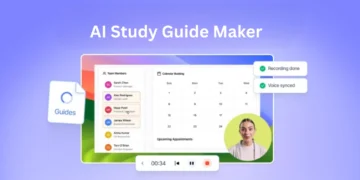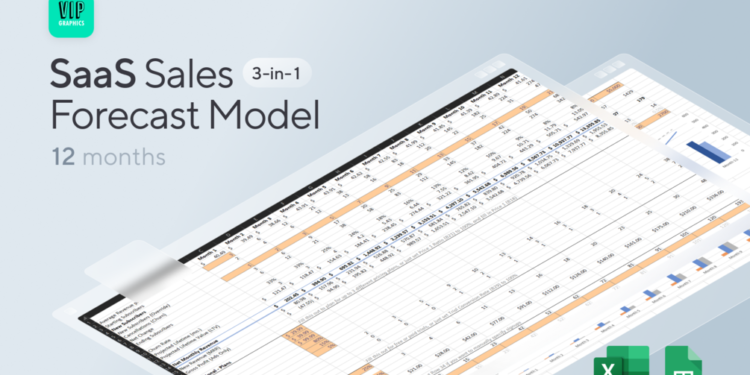For SaaS founders, understanding future revenue potential is one of the most critical aspects of strategic planning. Growth-driven startups operate in a dynamic environment where subscription models, churn rates, and customer acquisition costs can fluctuate rapidly. Without a clear financial roadmap, even the most promising SaaS businesses can face cash flow challenges or scaling inefficiencies. This is why using a SaaS revenue forecasting template is essential. It provides a structured framework to predict future revenue streams, optimize resources, and make informed business decisions that support sustainable growth.
Why SaaS Revenue Forecasting Matters
Unlike traditional business models that rely on one-time transactions, SaaS companies generate revenue through recurring subscriptions. This recurring structure allows for greater predictability, but it also requires careful analysis of retention, churn, and expansion metrics. Forecasting revenue accurately helps founders understand their company’s financial trajectory, set realistic growth targets, and identify when additional funding may be required.
A SaaS revenue forecasting template simplifies this process by organizing key inputs—such as Monthly Recurring Revenue (MRR), customer churn rate, new subscriptions, and upsell opportunities—into a cohesive model. It translates operational performance into a financial outlook, enabling leadership teams to make data-backed decisions. With a proper forecasting model in place, SaaS companies can anticipate growth plateaus, optimize marketing investments, and extend cash runway with precision.
Components of a SaaS Revenue Forecast
A comprehensive SaaS revenue forecasting template incorporates multiple elements that reflect the operational realities of a subscription business. The first component is MRR, the foundation of all revenue forecasts. MRR captures predictable income from monthly subscribers and can be expanded into Annual Recurring Revenue (ARR) for long-term planning. Tracking MRR growth over time allows companies to measure their momentum and assess scalability.
The next crucial factor is churn, the percentage of customers who cancel subscriptions during a given period. Even small increases in churn can have a significant impact on revenue forecasts, especially for early-stage startups. A forecasting template accounts for churn to ensure projections remain realistic and sustainable.
New customer acquisition also plays a pivotal role. By estimating how many new subscribers join each month, founders can project incremental MRR increases. Combined with metrics like Customer Acquisition Cost (CAC) and Lifetime Value (LTV), a SaaS revenue forecasting template helps determine the efficiency of growth initiatives. Upselling and cross-selling opportunities add another layer, showing how revenue can expand without solely relying on new customers.
Building Predictability and Investor Confidence
For investors and stakeholders, accurate revenue forecasts are a sign of operational maturity. They demonstrate that a SaaS company understands its growth drivers and financial dependencies. A SaaS revenue forecasting template allows founders to present clear, data-supported projections during fundraising discussions, increasing credibility and trust.
Investors typically look for consistent MRR growth, low churn, and scalable customer acquisition strategies. A well-designed forecasting model makes these patterns visible. It can also highlight scenarios that show how small improvements in retention or pricing lead to meaningful valuation gains. For example, increasing customer retention by just a few percentage points can significantly raise ARR projections and, in turn, company valuation.
The Strategic Role of Forecasting in Decision-Making
Forecasting is more than a financial exercise—it’s a strategic compass. A SaaS revenue forecasting template empowers leadership teams to test multiple growth scenarios. Founders can adjust inputs such as churn, new customer growth rate, or pricing changes to see how these variables influence revenue outcomes. This type of scenario planning is invaluable when preparing for product launches, market expansion, or fundraising rounds.
By understanding how each lever affects revenue, decision-makers can allocate resources more effectively. For instance, if forecasts show that customer retention drives more long-term revenue than acquisition, the company might invest more heavily in customer success initiatives rather than marketing campaigns. This approach aligns financial goals with operational execution.
How to Use a SaaS Revenue Forecasting Template Effectively
Using a SaaS revenue forecasting template requires accurate data and realistic assumptions. The process begins with collecting historical data on MRR, churn, and customer growth. From there, projections can be built month by month, incorporating new customer acquisitions, upgrades, downgrades, and cancellations. The goal is to create a living model that evolves as the business grows.
The most effective templates not only project revenue but also integrate expenses and cash flow. By linking revenue forecasts to financial metrics such as gross margin and operating costs, founders can see how revenue growth translates into profitability. This holistic view helps ensure that rapid scaling does not outpace financial sustainability.
Another key advantage of using a structured template is consistency. Instead of relying on fragmented spreadsheets or rough estimates, a forecasting model standardizes assumptions across departments. This allows finance, sales, and operations teams to collaborate with a shared understanding of targets and performance expectations.
The Benefits for SaaS Founders and CFOs
For early-stage SaaS founders, forecasting can feel complex, but a SaaS revenue forecasting template simplifies the process into manageable components. It eliminates guesswork by transforming raw data into clear insights about growth trends and potential challenges. For CFOs, the template becomes a critical management tool, helping them identify when to raise capital, adjust pricing models, or realign budgets based on expected revenue changes.
At K-38 Consulting, LLC, our expertise in financial modeling and outsourced CFO services helps SaaS startups harness the full potential of revenue forecasting. We understand that no two SaaS businesses are identical, which is why our forecasting templates are tailored to reflect unique revenue models, pricing strategies, and customer lifecycles. By combining financial precision with SaaS-specific insights, we enable founders to make informed decisions that accelerate growth and attract investor confidence.
Driving Sustainable Growth Through Insight
Ultimately, forecasting revenue is not just about predicting numbers—it’s about understanding the story behind them. A SaaS revenue forecasting template provides that narrative clarity. It shows how marketing efforts, customer success strategies, and pricing adjustments converge to drive financial outcomes. When used consistently, it transforms forecasting from a routine reporting task into a strategic advantage.
In today’s competitive SaaS ecosystem, data-driven decision-making separates thriving startups from struggling ones. Founders who adopt a structured forecasting approach gain the visibility they need to scale efficiently and sustain long-term growth. With a robust SaaS revenue forecasting template, SaaS leaders can navigate uncertainty, manage cash flow with confidence, and focus on what truly matters—building a business that grows predictably and profitably.





























